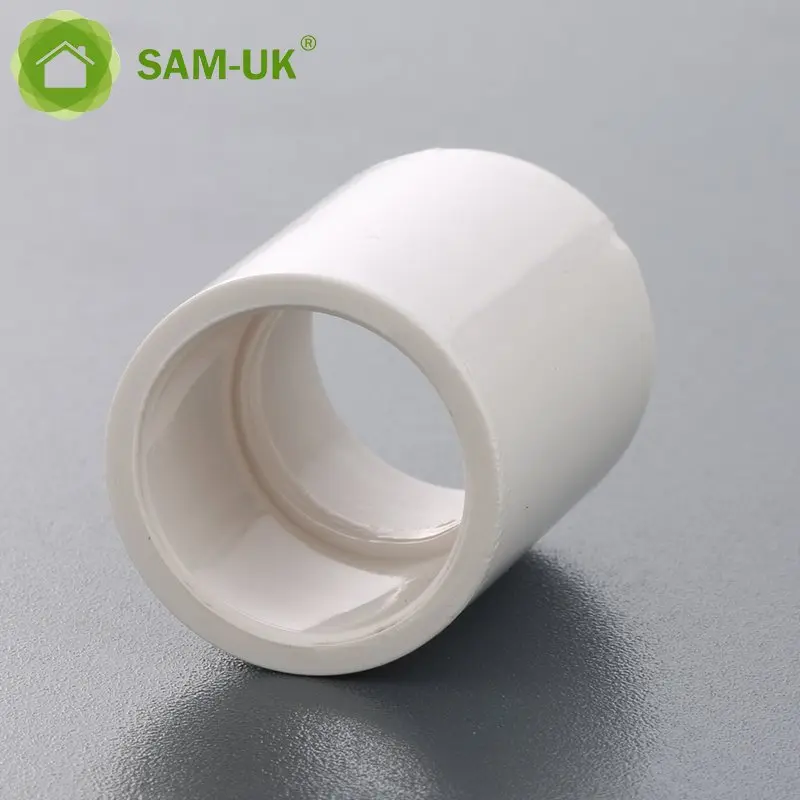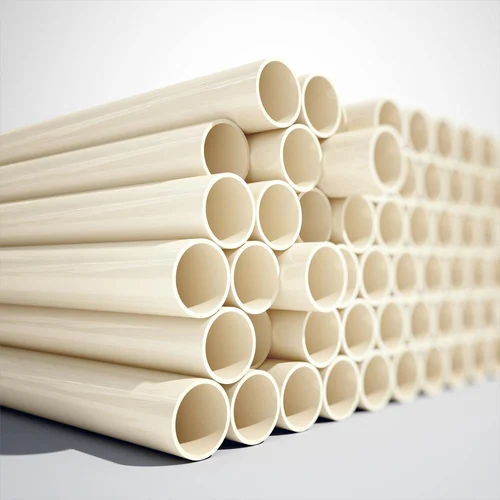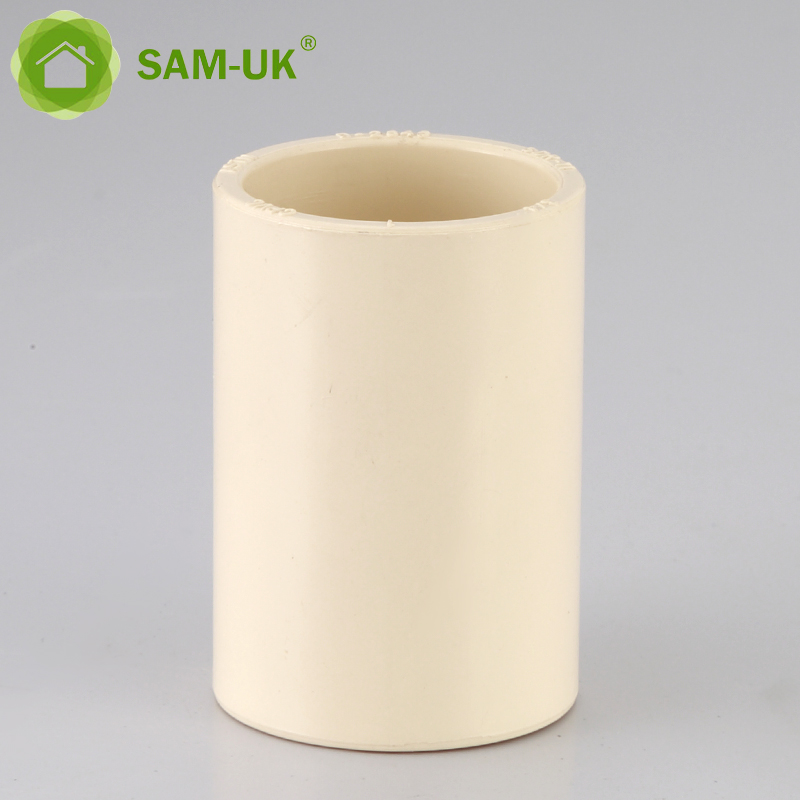Article Introduction
In everyday life people often wonder, what is the difference between PVC and CPVC pipes and fittings? Is PVC a cheaper alternative? Can I substitute one for the other? Are the fittings the same size? How different will they be?
The truth is, the two materials are quite different. We will start with some chemistry and then describe the various uses of each.
PVC or UPVC (Polyvinyl Chloride) and UPVC (Unplasticized Polyvinyl Chloride) are synonyms. PVC is essentially a rigid material that uses plasticizers to make it softer. In this article, we will focus on the differences between UPVC and CPVC.

What is PVC? & What is PVC pipe Used For ?
The full form of PVC pipe is polyvinyl chloride pipe. It is most commonly used in plumbing and drainage systems as an alternative to metal pipes. PVC pipe is known for its durability, strength, ease of installation, and cost-effectiveness, making it one of the most prevalently used plastics in the world. It is a thermoplastic material that is moulded in various shapes for the manufacturing of pipes, fittings, valves, and other liquid handling supplies. Some of the PVC pipe uses include its applications in:
- Water and plumbing pipes
- Chemical handling, processing, delivery, and transfer
- Controlling and handling waste
- Building infrastructure and structural material
- Coatings and cable insulation

The Molecular Makeup of PVC
The prefix “poly” means “many” in Latin. Polymers are long chains of monomeric basic units. Vinyl is a type of hydrocarbon group found in plastics. The molecular formula of vinyl chloride monomer, or the fundamental unit for polyvinyl chloride, is C2H3Cl. Polyvinyl chloride is formed by linking many units of this vinyl chloride monomer through a process known as polymerization.

What is CPVC Pipe and What is It Used For ?
CPVC pipe is a pipe made of PVC-C as the main material, also known as CPVC pipe. CPVC pipe has the characteristics of high mechanical strength at high temperature, pressure resistance, high temperature resistance, corrosion resistance, light weight and high strength, strong flame retardancy, and long service life. It is suitable for the following various industrial and civil fields:
Industrial applications: CPVC pipes are widely used in industrial fields, such as electroplating plants, chemical plants, chlor-alkali plants, etc., for transporting hot water, corrosive media and wet chlorine gas, etc.
Power industry: CPVC power pipes are often used for cable protection. They have the characteristics of high strength, high temperature resistance, corrosion resistance, flame retardancy, and good insulation performance. They are widely used in urban power grid construction, municipal renovation projects, airport engineering construction, etc.
Civil fields: CPVC pipes are also used in landscaping projects, tap water projects, electrical projects, highway projects, natural gas projects, etc., and are favored for their light weight, good thermal insulation performance, and convenient construction.

The Limitations of PVC Pipes Over CPVC Pipes
For choosing the right material type for your plumbing systems, you need to understand the limitations of PVC pipes over CPVC pipes to make the right decision. Here are a few limitations you must consider before making the choice:
- CPVC pipes can withstand temperatures up to 200 °F, whereas PVC pipes peak at 140°F.
- PVC pipe is limited to being available in nominal pipe sizes, whereas CPVC pipe is available in both nominal pipe sizes and copper tube sizes.
- CPVC pipe is more flexible than PVC pipe and requires support at three-foot intervals to stay in place.
- The tensile strength of PVC pipe is 7500 PSI, whereas CPVC pipe has a tensile strength of 8200 PSI.

Common CPVC and PVC pipe Product Types
Both PVC and CPVC resins begin as powders or pellets, often with additives already mixed in. The resin is then shaped or moulded into residential, commercial, and industrial products.
PVC and CPVC pipe & fittings are moulded using one of two methods:
- Injection moulding is a simple and repeatable process for high-volume production. The resin is fed into a heated barrel, then injected through the mould tool and cooled to harden.
- Another high-volume process, extrusion, begins when the resin is fed into the machine at the top. The raw material is gradually melted using the mechanical energy of a turning screw and heaters installed along the barrel. It is further formed into a continuous profile and cooled to harden.
Special Considerations:
- When PVC or CPVC is heated, melted, or hot cut, toxic fumes (dioxins and hydrogen chloride) are released.
- When working with PVC pipe fittings or CPVC pipe fittings, work in a well-ventilated area and wear appropriate safety clothing, including gloves, goggles, and a respirator if available.
- For solvent welding, each material requires a primer and solvent cement (pipe cement) specifically designed for use with PVC or CPVC. The type of solvent cement may vary depending on the intended use of the pipe.
- PVC pipe is less expensive than CPVC pipe, and both materials are less expensive than copper, iron, or stainless steel pipe.
- PVC pipe sizes conform to the Nominal Pipe Size (NPS) dimensional standards (NPS references the inside diameter of the pipe).
- CVPC pipe sizes conform to the Nominal Pipe Size (NPS) and Copper Tube Size (CTS) dimensional standards (CTS references the outside diameter of the pipe).
How do we choose pvc pipe vs cpvc pipe in a project or job?
Choosing between PVC and CPVC pipe depends on the specific needs of each project, which is why it is so important to understand the performance of each material. Since their functions are very similar, the best choice for your project can be determined by asking a few specific questions:
- Will the pipe be exposed to any kind of heat ?
- How important is the cost of the material ?
- What size pipe does your project require ?
Based on the answers to these questions, it can be properly decided which material is needed. If the pipe is going to be exposed to any heat, it is safer to use CPVC pipe because it has a higher heat resistance.

In many cases, paying a higher price for CPVC does not provide any additional benefits. For example, PVC is often recommended for cold water systems, venting systems, drainage systems, and irrigation systems. Since CPVC is more expensive and does not provide any additional benefits, PVC pipe would be the best choice.

Summary
When it comes to understanding the difference between PVC and CPVC, it will now be clear to you through this article that CPVC is a more advanced/upgraded version of PVC as it utilizes all the advantages of PVC and overcomes all the limitations which can be summarized as follows:
- CPVC single pipe system can be used for both hot and cold water.
- CPVC pipes are BIS approved for use in both hot and cold water.
- CPVC can withstand higher temperatures of water.
- CPVC has better UV stability and can be used for both interior and exterior applications.
- CPVC has been certified for drinking water all over the world.
Note: For drainage applications, if choosing between UPVC and CPVC, PVC/UPVC pipes are better than CPVC. Make a wise choice as houses are not built every day and by using the right material, you will have trouble-free pipes for years to come.
Hopefully, we have helped you understand the difference between PVC pipes and CPVC pipes. If you would like to know more about other tubes or have purchasing needs, please contact us (SAM-UK). We will be happy to help you!

About SAM-UK
SAM-UK are a professional 18+ years manufacturer in producing vinyl building profile products and PVC , CPVC , PPH , PPR , PP pipes and pipe fittings, valves, taps and so on. We own the certificates of SGS\SONCAP\ISO9001\CE\NSF,support color /size customization. Welcome to consult for Catalog and Product. you can contact us at email sales@sam-uk.com







